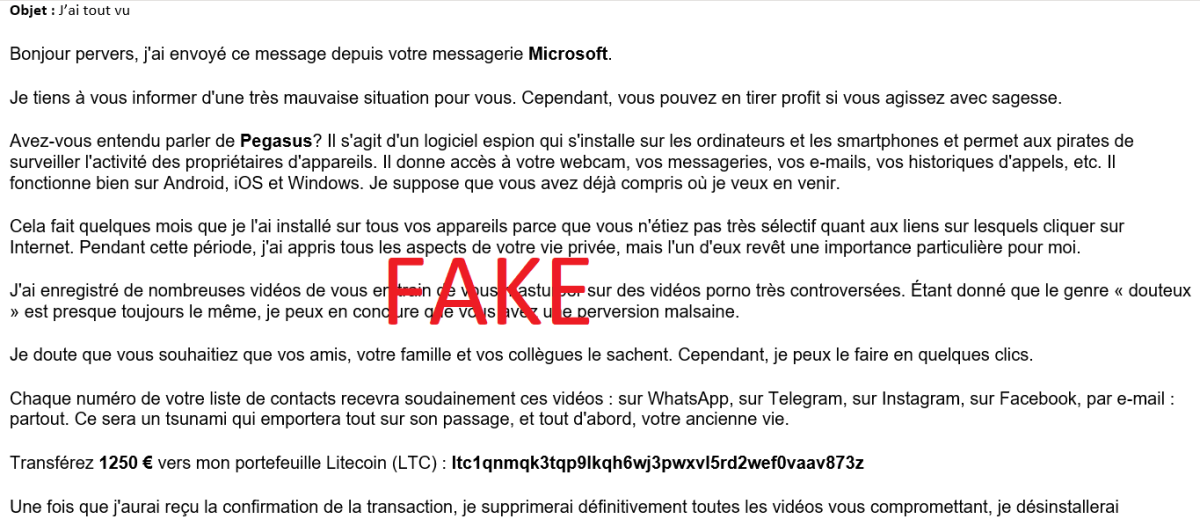Have you ever received an email supposedly sent by yourself? Or a message that appears to come from your bank, a government agency or even a friend or relative... but is actually a scam?
This is known as spoofing.
What is spoofing?
Spoofing is a technique used by scammers to disguise their identity.
In practical terms, they change the sender's address to make you believe that they are someone you can trust:
- your own email address,
- a well-known company,
- or even an official institution.
The aim is to trick you into opening their message, clicking on a link or even sending them money.
A typical example is blackmail by email.
Many people receive emails claiming that fraudsters have compromising videos or intimate information.
These messages are almost always sent via spoofing:
- the address displayed looks like yours,
- the tone is threatening (‘if you don't pay, we will release these videos’),
- they often demand payment in cryptocurrency.
Rest assured: this is a lie. The scammers have no proof, no videos. They are simply banking on fear and panic.
Can spoofing be detected?
Unfortunately, it is not always easy to spot a spoofed email.
Even attentive people can be fooled, because:
- The address displayed may appear to be correct.
- The message sometimes arrives in your main inbox, not in your spam folder.
However, there are some clues that can tip you off:
- The message contains threats or urges you to act quickly.
- You are asked to pay in cryptocurrency or via an unusual method.
- The text is often riddled with errors or poorly translated.
How should you respond if you receive this type of message?
- Do not reply.
- Never pay: that is what the scammers want.
- You can forward fraudulent emails to suspicious@safeonweb.be. The content of your report will then be processed automatically.
- Delete the email.
- Enable two-factor authentication on your email account.

